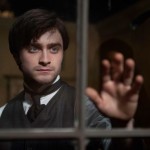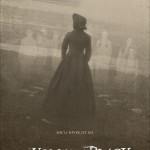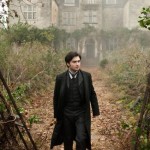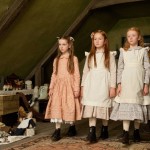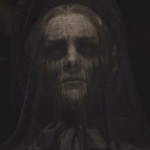The first good news about the movie of Susan Hill‘s celebrated ghost story The Woman In Black (which should have been Victorian but was actually written in 1983) comes at the start of the opening titles: Hammer. Yes, Hammer Horror is back from the grave, and has been quietly going about its business since 2007. As a teen I was brought up on many of the 70s Hammer classics, so it seems entirely in keeping with British tradition that a well-known spooky story should be produced and distributed by this great name.
I once saw the stage version in Manchester, a production that has done excellent business over the years. It is a two-hander, and adapted very cleverly to enable an effective and scary stage presence. Arguably the most frightening production I ever saw on stage, but the film version would inevitably open out the fairly simple story and use many of the traditional tricks of the horror trade to frighten its audience, and there are plenty to go round: the creaky old house surrounded by marshland (an excellent choice of location, assuming it’s not recreated on CGI), the torrential rain and bleak sky, close-ups of the faces of old dolls and clockwork toys (see also Sleuth), the graveyard, the dusty furniture (especially rocking chair), the deep cello notes accompanied by high-pitched screechy music, the sudden noises, and many more – you will know them all off by heart.
This is not to say TWIB is badly made, far from it. Compared to the cardboard sets of some Hammer movies, this is a beautiful construction, revolving around the down at heel lawyer, Arthur Kipps, ably played by a post-Potter Daniel Radcliffe. Radcliffe is patently several years, if not a decade too young to play the widower Kipps, but fills the shoes to great effect. Mourning becomes Radcliffe, it would seem.
Luckily for the audience, he has chosen not to ham up the role, understating the fear and trepidation with some skill, almost, indeed, as if he expects to meet death and has girded his loins specially. This is a job Kipps cannot afford to screw up, so even the appearance of the eponymous woman does not faze him – he will continue to the bitter end, come what may! That said, he goes from scepticism to bewilderment to acceptance to exorcism with a remarkable turn of pace. Little sign of agonising, though to be fair Kipps does admit to ambivalence at one point, feeling that his late wife is with him.
Radcliffe is ably supported by sceptic Sam Daily (Ciarán Hinds), Daily’s grief-stricken wife (Janet McTeer, whom I once saw on stage at the Royal Exchange in Manchester), and a cast of fine character actors. Particular credit to Liz White, for playing the good woman herself, Jennet Humfrye, with a cacophony of screeches and haunting stares, sufficient to drive children to suicide (not a spoiler – this much is revealed right from the start!)
The gradual striptease of revelation and shocks are handled effectively by director James Watkins, though the music of Marco Beltrami is worthy of mention. This creation is more subtle than many of the horror ilk, though I was especially gratified that some scenes were edited in total silence – a very effective weapon in the horror arsenal, used well. The story is pretty thin, but atmospheric narrative and visuals make the 95 minutes seem just about right. You would not want more than that.
Proof of the pudding is in the eating, of course. I enjoyed the movie but did not jump at all, possibly since I know the story so well, and the ways of ghost stories. Adam said it was the scariest movie he had yet seen, and Lindsey… well, she screamed twice!! 



